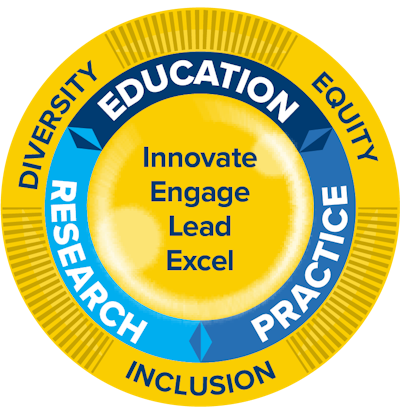
Strategic Plan
Envisioning the future of the University of Rochester School of Nursing.
Strategic Plan
Envisioning the future of the University of Rochester School of Nursing.
Our Priorities
Strategic Plan 2021-24
It was the work of Loretta Ford, founding dean of the School of Nursing, which brought together nursing services in the University of Rochester Medical Center with nursing education and research, and became a national model for other nursing schools.
This Unification Model is not only a philosophical approach but an organizational structure that operationalizes the interdependence among education, research, and practice, forging a critical link between scientific discovery and improved health care outcomes.

Today, the School of Nursing’s missions of education, research, and practice are realized through a lens of diversity, equity, and inclusion. Our constitutional core principles of Innovate, Engage, Lead, Excel, inform the creation of strategic planning strategies, tactics, and metrics related to our four overarching goals.
1. Emerge as a national leader in academic innovation to transform nursing education for 21st century health care
Objectives and strategies to achieve this goal include:
2. Accelerate knowledge generation and dissemination in nursing and health science from discovery to implementation.
Our objectives and strategies to achieve this goal include:
3. Be the exemplar of outcome-driven wellness and preventive health services in Upstate New York.
Our objectives and strategies to achieve this priority include:
4. Create a culture of wellness in which the entire School of Nursing community functions optimally, finds joy, and thrives.
Our objectives and strategies to achieve this goal include:

UNIVERSITY NEWS
A future with Boundless Possibility
The 2030 University of Rochester strategic plan is here, with bold and transformational goals that will guide the University forward. From research excellence, exceptional education, and health care of the highest order, to employee success and sustainable growth—we’re striving to reach further, embrace challenges, and be boundless.

